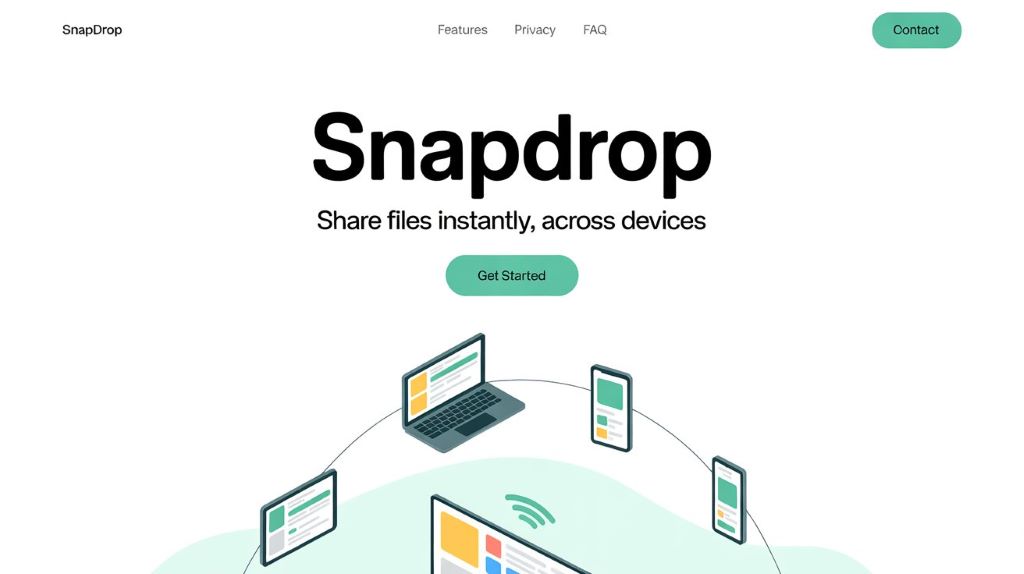Snapdrop - Free Transfer Files Cross-Platform | snapdrop.net
In today’s hyper-connected world, transferring files between devices should be effortless—yet many solutions still come with annoying barriers like app installations, account signups, or reliance on cloud services. That’s where Snapdrop shines. This minimalist, open-source web tool offers a fast, private, and cross-platform way to share files instantly on your local network.
What is Snapdrop?
Snapdrop is a free, browser-based file-sharing service that enables peer-to-peer transfers across devices connected to the same Wi-Fi network. Heavily inspired by Apple’s AirDrop, it bridges the gap for users on Windows, Android, Linux, and other platforms. Unlike many file transfer tools, Snapdrop doesn’t require installing apps or creating accounts. It works directly in your web browser using technologies like WebRTC and WebSockets to create secure and private communication channels.

What happened to Snapdrop?
Snapdrop remains an actively maintained and widely used open-source project. Since its release, it has gained immense popularity due to its simplicity and reliability. Occasionally, the public server (snapdrop.net) may face downtime due to heavy traffic or maintenance, but the project itself is alive and well, with its code available on GitHub. Users can even self-host it if needed.
Why is Snapdrop so popular?
- No setup hassle: Just open a browser and start sharing.
- Cross-platform support: Works on nearly all operating systems with a modern browser.
- Fast and private: Transfers happen directly over local networks.
- No third-party tracking: Being open-source and peer-to-peer means your files stay yours.
Standout features of Snapdrop
- Real-time device discovery: Devices detect each other instantly on the same network.
- Peer-to-peer transfer: Files are never uploaded to a server; they go directly from sender to recipient.
- Cross-device compatibility: Works across Android, iOS, Windows, macOS, Linux, and more.
- Drag and drop interface: Effortlessly share files with a clean, intuitive UI.
- No file size limits (practically): Large files are supported, depending on browser and network.
- Progressive Web App (PWA): Can be added to your home screen for app-like use.
- Open-source: The transparency and community contributions increase trust and reliability.
What can I do with Snapdrop?
Snapdrop is ideal for:
- Sending photos from your phone to your laptop
- Transferring documents between office computers
- Quickly moving videos, PDFs, or folders (depending on browser)
- Sharing files between different operating systems without using cloud storage or USB drives
How to use Snapdrop?
- Connect to the same Wi-Fi: All devices must be on the same local network.
- Open snapdrop.net: In any modern browser on each device.
- Device discovery: Devices appear with nicknames (e.g., "Blue Tiger").
- Send files: Click the recipient’s icon or drag and drop files onto it.
- Receive files: The other device will prompt to save the file.
Alternatives to Snapdrop
- AirDrop: For Apple-only ecosystems.
- Nearby Share: Native Android and Chromebook sharing.
- Shareit / Xender: Cross-platform apps with media features.
- Send Anywhere: File transfer via keys or links.
- Local network shares (SMB): For more advanced users.
- Filedrop: A browser-based tool similar to Snapdrop.
FAQs
Is Snapdrop safe to use?
Yes. Snapdrop uses WebRTC, a secure communication protocol, to establish direct peer-to-peer connections. Files do not pass through or get stored on any external servers.
Is Snapdrop legal?
Absolutely. Snapdrop is open-source software and fully legal to use. It doesn’t facilitate or promote piracy—users are responsible for the content they share.
Does Snapdrop require an account to use?
No. Snapdrop is entirely anonymous and doesn’t require registration, login, or personal data.
How to have the best experience with Snapdrop?
- Use a stable Wi-Fi network.
- Keep your browser updated.
- Prefer Chrome or Firefox for best compatibility.
- Avoid transferring huge files over weak networks.
Is Snapdrop available on mobile devices?
Yes. Snapdrop works on any modern mobile browser like Chrome (Android) or Safari (iOS). You can also install it as a PWA for quick access from your home screen.
Are there any file size limitations when using Snapdrop?
There are no enforced limits by Snapdrop itself, but browser memory and network speed can affect how large a file you can share.
Does Snapdrop have an app?
There’s no native app, but Snapdrop supports PWA (Progressive Web App) functionality. You can add it to your home screen on mobile for an app-like experience.